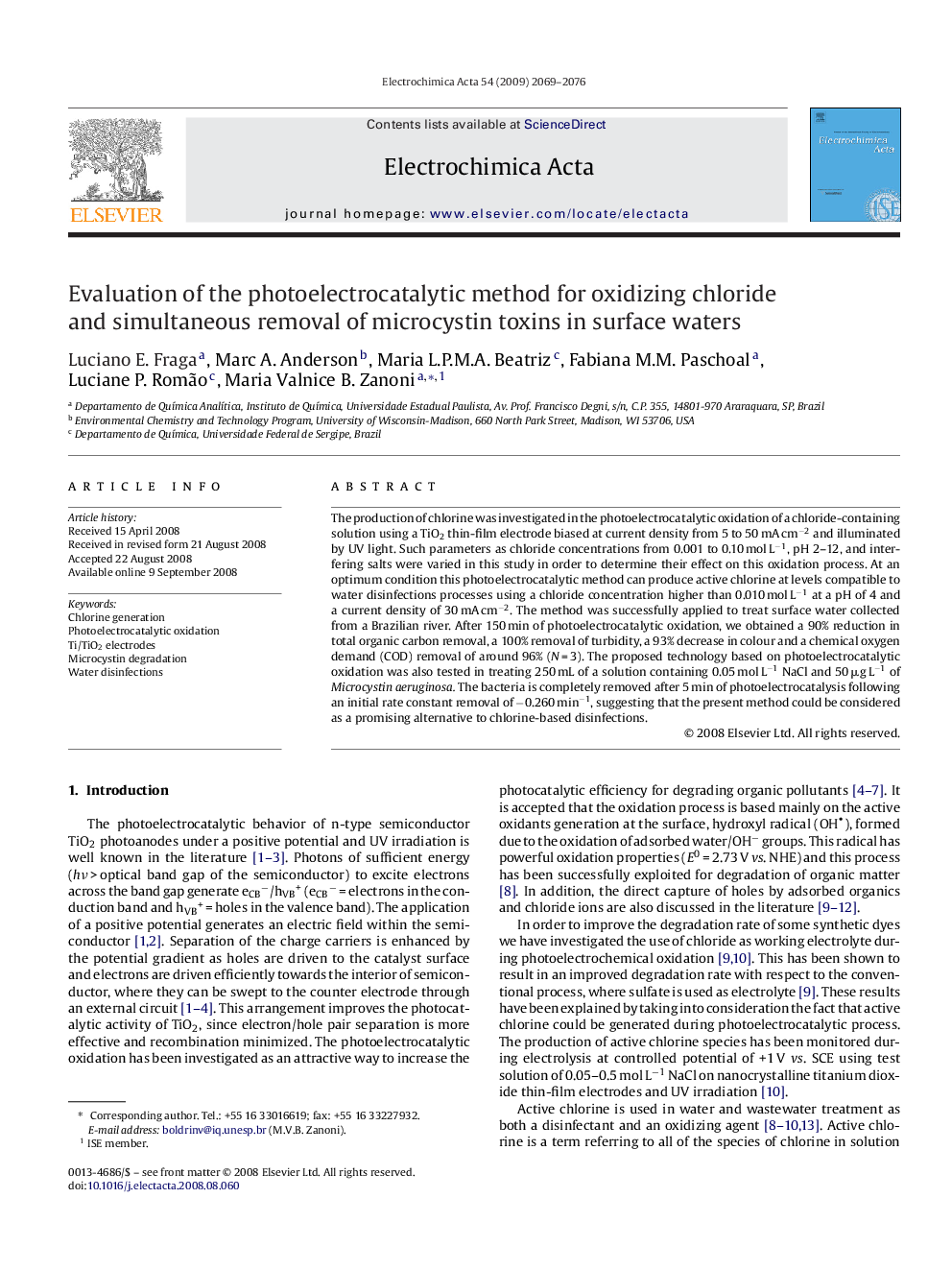| Article ID | Journal | Published Year | Pages | File Type |
|---|---|---|---|---|
| 193006 | Electrochimica Acta | 2009 | 8 Pages |
The production of chlorine was investigated in the photoelectrocatalytic oxidation of a chloride-containing solution using a TiO2 thin-film electrode biased at current density from 5 to 50 mA cm−2 and illuminated by UV light. Such parameters as chloride concentrations from 0.001 to 0.10 mol L−1, pH 2–12, and interfering salts were varied in this study in order to determine their effect on this oxidation process. At an optimum condition this photoelectrocatalytic method can produce active chlorine at levels compatible to water disinfections processes using a chloride concentration higher than 0.010 mol L−1 at a pH of 4 and a current density of 30 mA cm−2. The method was successfully applied to treat surface water collected from a Brazilian river. After 150 min of photoelectrocatalytic oxidation, we obtained a 90% reduction in total organic carbon removal, a 100% removal of turbidity, a 93% decrease in colour and a chemical oxygen demand (COD) removal of around 96% (N = 3). The proposed technology based on photoelectrocatalytic oxidation was also tested in treating 250 mL of a solution containing 0.05 mol L−1 NaCl and 50 μg L−1 of Microcystin aeruginosa. The bacteria is completely removed after 5 min of photoelectrocatalysis following an initial rate constant removal of −0.260 min−1, suggesting that the present method could be considered as a promising alternative to chlorine-based disinfections.
